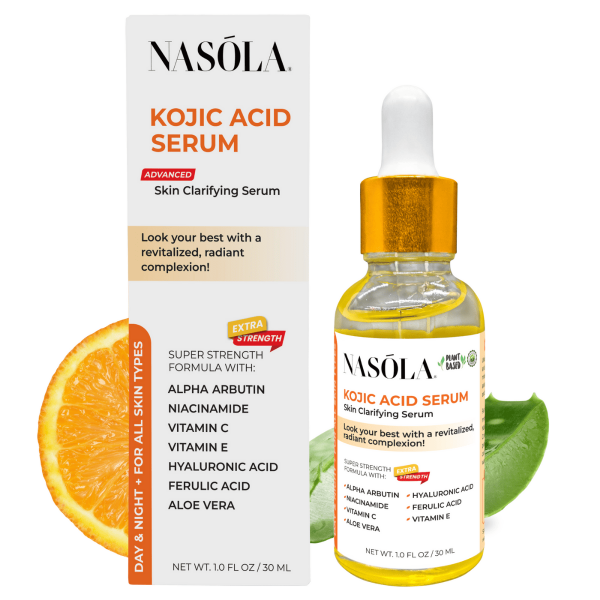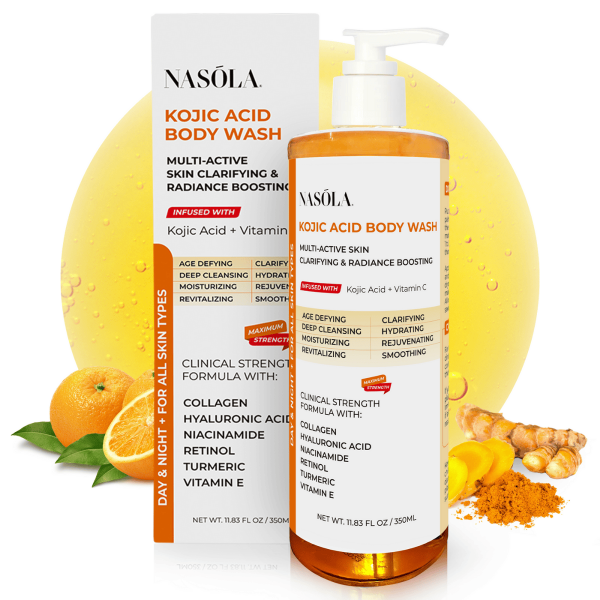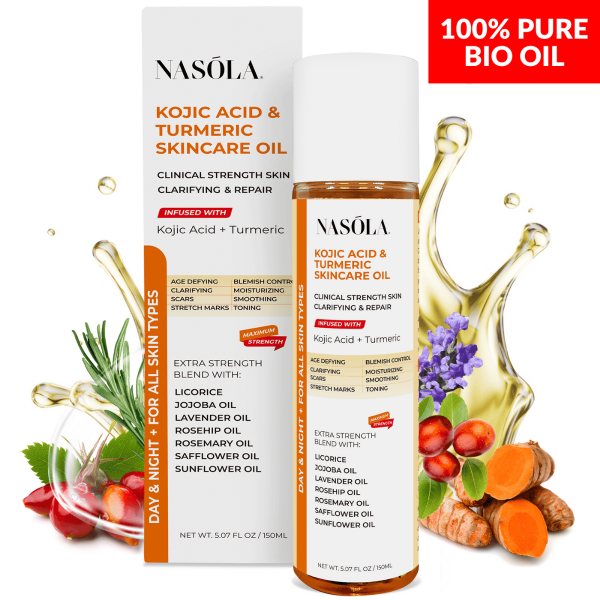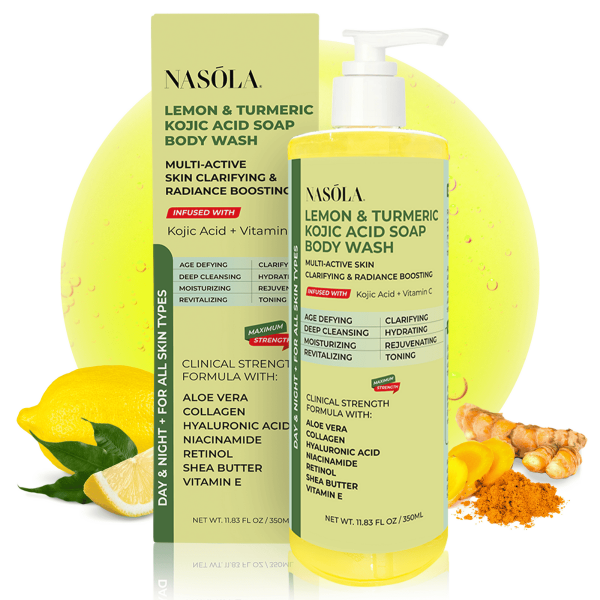Does vitamin e oil clog pores?
If you’ve typed this into a search bar recently, I’m going to guess one of two things happened.
One—you just bought a bottle of vitamin E oil and now you’re second-guessing every drop. Or two—you’re trying to play it smart and research before slathering it on.
Either way, you’re not alone. Many of us, especially with oily or acne-prone skin, wonder if that “moisture magic” might stage a breakout ambush.
Here’s the real scoop. Vitamin E has powerhouse benefits… but like any superhero ingredient, it has weaknesses depending on who it’s trying to help.
Today, we’ll unpack who should (and shouldn’t) be using vitamin E oil, whether it clogs pores, and which products will give you the glow—minus the chaos.
Ready?
Let’s get into it.
- Does Vitamin E Oil Clog Pores? Facts You Need to Know
- The Role of Kojic Acid in Preventing Breakouts Related to Vitamin E Oil
- Turmeric Infusion: A Natural Ally to Vitamin E Oil
- Understanding Your Skin Type Before Using Vitamin E Oil
- Ingredient Spotlight: Kojic Acid
- Product Layering Tips to Avoid Pore Clogging
- Conclusion
- Frequently Asked Questions
Does Vitamin E Oil Clog Pores? Facts You Need to Know
Vitamin E oil divides the room real fast. Especially when it involves acne-prone or sensitive skin. Some rave about its healing benefits, others swear it wrecked their skin.
There’s a reason for this split—it’s all about form and formulation. So let’s break it down from the top, so you don’t have to find out the hard way (like I did).
Vitamin E, also known as tocopherol, is fat-soluble and beloved for fighting free radicals and locking in moisture. That sounds great on paper—but how it shows up in your skincare matters. The thicker, the purer, the richer? The riskier it gets for your pores.
Not ideal if your skin is already in chaos mode.
Products like the Nasola Kojic Acid Turmeric Skincare Bio Oil change the game. This oil is infused with vitamin E but blended with skin-balancing botanicals (like turmeric and kojic acid), making it absorb fast and stay non-greasy.
Essential for people who want the glow—not the clog.
Here are a few key points to keep in mind:
- Pure vitamin E oil has a thick texture that can trap bacteria and oil under the skin
- Comedogenic ratings for vitamin E range from moderate to high when used in isolation
- Acne-prone skin may experience breakouts with pure oils but thrive with diluted formulas
- Formulation is everything—blended products often deliver the benefits without the drawbacks
The Science Behind Vitamin E
Vitamin E is an antioxidant found in natural oils, nuts, and green leafy vegetables. In skincare, it’s often celebrated for accelerating healing and improving skin texture.
However, unrefined vitamin E oil can create a seal that suffocates your pores, especially in humid climates.
For those with reactive or problematic skin types, this may trigger whiteheads, blackheads, or painful cysts. Beyond texture, sourcing and concentration make a difference too. Synthetic tocopherol may behave differently than naturally concentrated oil.
Want that vitamin E punch without breaking out? Choose hybrids. Nasola Kojic Acid Serum brings vitamin E together with kojic acid, creating a brightening and soothing effect that doesn’t come off heavy.
It’s radiant skin—the gentle way.
Vitamin E Oil vs. Products Containing Vitamin E
Vitamin E oils versus skincare products with added vitamin E? Huge difference in performance.
Products designed with multiple ingredients are built to stabilize and balance each other out. Solo oils, especially applied heavily at night, may throw off your skin’s natural oil production.
Instead of pure oil, keep your eye out for:
- Water-based serums with vitamin E (like Nasola Kojic Acid Serum)
- Oils blended with turmeric to calm inflammation (like Nasola Kojic Acid Turmeric Skincare Bio Oil)
- Body washes that nourish while cleaning (like Nasola Kojic Acid Body Wash)
- Cleansing soaps powered by turmeric, lemon, and kojic acid (looking at Nasola Lemon Turmeric Kojic Soap Body Wash)
Cleansing, treating, hydrating—all in one, minus the guesswork.
The Role of Kojic Acid in Preventing Breakouts Related to Vitamin E Oil
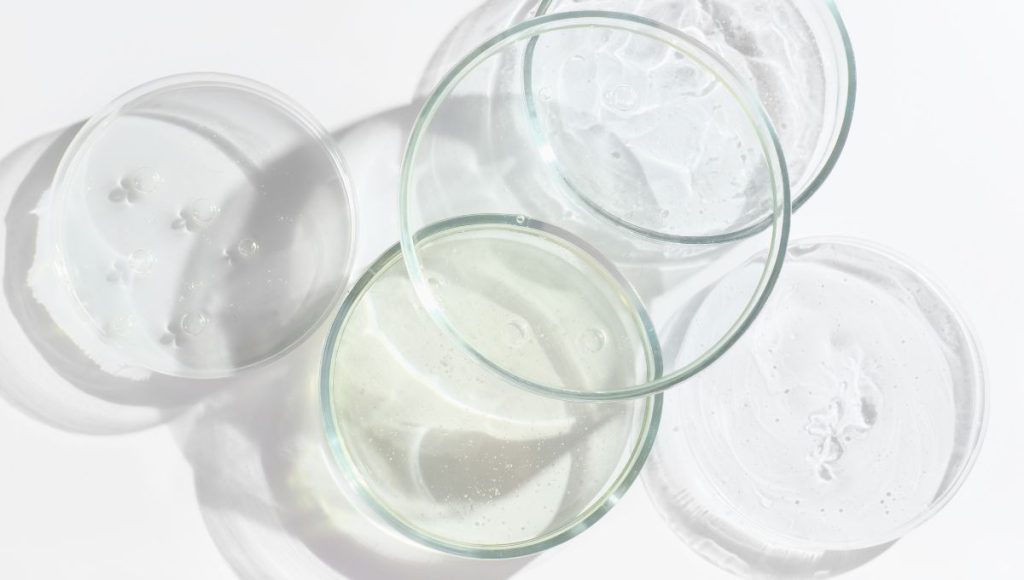
If vitamin E is the comforter, kojic acid is the manager. It keeps things in balance. This means that even if some richness enters the mix (like vitamin E), kojic acid will stand there with hands on hips, saying, “Not today, clogged pores.”
Kojic acid not only fades dark spots, but it also helps eliminate acne-causing bacteria—so you get smoother, brighter skin while vitamin E works beneath the surface to heal.
One formula that does both beautifully? The Nasola Kojic Acid Serum.
How Kojic Acid Balances Vitamin E in Formulations
Brighten and block bacteria? That’s kojic acid’s thing. With vitamin E in the same formula, you gain elasticity, collagen protection, and repair. Without clogging pores—IF—and this is key—kojic acid is present.
Why this works:
- Kojic acid has antimicrobial properties that make it hard for breakout-spawning bacteria to thrive
- It reduces melanin synthesis, which means those dark patches fade faster
- It’s non-comedogenic and balances rich ingredients like vitamin E perfectly
- Helps reduce blemish scars while calming inflammation
Nasola Kojic Acid Serum is one of the few formulations keeping this ratio just right.
Reducing Hyperpigmentation Without Pore Blockage
Hyperpigmentation is tricky. Sure, you want a bright, even tone—but if the products work too hard or clog your pores, you’re right back to square one.
This is where Nasola Kojic Acid Body Wash saves the day. Energized by kojic acid and vitamin E, it removes grime while gently lightening scars without causing flare-ups.
Why it’s perfect for daily use:
- Deeply cleanses without stripping the skin barrier
- Helps fade hyperpigmentation better than harsh brightening acids
- Contains vitamin E for softness and suppleness
- Non-irritating for daily showers, even with active ingredients
Clarity doesn’t need to be complicated.
Turmeric Infusion: A Natural Ally to Vitamin E Oil
Turmeric is the quiet miracle in your cabinet that’s been fighting inflammation for centuries.
When infused with vitamin E, turmeric tones down potential irritation, balances oil, and supports your skin’s sanity. Especially after reactions caused by thicker oils.
It’s the boss ingredient for getting the same glow with none of the grief.
One blend that pulls this off perfectly? The Nasola Lemon Turmeric Kojic Soap Body Wash.
Why Turmeric Is a Game Changer for Pore Health
Turmeric contains curcumin—a natural anti-inflammatory compound that shrinks swelling, reduces redness, and keeps bacteria from wreaking havoc.
Here’s what makes turmeric a skin champion:
- It’s anti-inflammatory, which calms irritation caused by rich oils
- Anti-bacterial, reducing acne-causing microbes
- Has antioxidant properties like vitamin E to strengthen skin resilience
- Speeds up healing and refines overall skin texture
This synergy with vitamin E is why Nasola Kojic Acid Turmeric Skincare Bio Oil is a total skin recovery formula.
Powerhouse Product Pick: Nasola Lemon Turmeric Kojic Soap Body Wash
This soap body wash is a 3-in-1 multitasker.
Turmeric. Lemon. Kojic acid—and yes, vitamin E—all teaming up to brighten, even out tone, and keep your pores clean. Think of it as skincare therapy in a bar.
With Nasola Lemon Turmeric Kojic Soap Body Wash, you get:
- Gentle exfoliation from lemon and kojic acid
- Moisture-locking protection from vitamin E
- Inflammation control from turmeric
- A soap that softens skin while eliminating dark spots
It’s ideal for daily use on acne-prone or combination skin.
Understanding Your Skin Type Before Using Vitamin E Oil

Honestly, the answer to “does vitamin e oil clog pores” depends entirely on your skin type.
Knowing your skin’s limits will help you choose the right products, strengths, and combinations.
Let’s talk about who should be careful with vitamin E oil—and who just might fall in love with it.
Who Should Avoid Pure Vitamin E Oil?
If your skin leans oily, acne-prone, or sensitive—pure vitamin E oil probably isn’t your BFF.
Here’s why:
- It’s thick and occlusive, which can trap oil and debris in already congested skin
- Most pure vitamin E oils lack balancing agents to offset the heaviness
- Frustrated pores may respond with breakouts or inflammation
- Sensitive skin types often react to highly concentrated oils
But don’t worry—there’s a smarter formula. Nasola Kojic Acid Serum offers the healing of vitamin E with pore-friendly texture and anti-inflammatory support.
Who Can Safely Use Vitamin E Oil?
Got dry, flaky, or mature skin?
You’re in luck. Your skin barrier might be shouting for the deep nourishment that vitamin E oil can deliver.
Dry and aging skin benefit most from vitamin E:
- Prevents transepidermal water loss, sealing in moisture
- Softens rough patches and restores elasticity
- Supports collagen production and healing
- Works best when paired with non-comedogenic oils and calming botanicals
A perfect example is Nasola Kojic Acid Turmeric Skincare Bio Oil, which hydrates mature skin without risking pore blockage.
Ingredient Spotlight: Kojic Acid
Kojic acid deserves a love letter at this point. It’s the low-key MVP in pigmentation control and acne-safe skincare, all while being surprisingly gentle.
The reason so many fear heavy oils like vitamin E? It’s the fear of pore congestion—but kojic acid helps bust that myth by keeping skin bright and balanced.
What Is Kojic Acid and Why It Matters?
Kojic acid is derived from fermented ingredients—usually rice or fungi—and it helps fade discoloration by stopping melanin production at the source.
Core benefits include:
- Great for treating sun spots, dark areas, or old acne scars
- Gently exfoliates without harsh physical scrubbing
- Anti-bacterial properties soothe and brighten simultaneously
- Non-irritating for acne-prone and combo skin
Found in Nasola Kojic Acid Body Wash, it gives you daily skin-clearing results without stripping moisture.
Kojic Acid in Daily Skincare
Want to keep your face and body radiant without bottling up your pores?
Make kojic acid a non-negotiable in your daily regimen.
Why Nasola Kojic Acid Body Wash works:
- Gentle enough for everyday use—even on sensitive skin
- Contains kojic acid AND vitamin E for a dual-effect solution
- Encourages smoother texture over time
- Pairs easily with any skin treatment targeting pigmentation or breakouts
Sometimes you just need a reset button in the shower—and this is it.
Product Layering Tips to Avoid Pore Clogging

Layering can either make or break your skin’s reaction to ingredients like vitamin E. Pairing it with the right pH-balanced, active-centric products will help you experience its full glow-up potential—without clog chaos.
Here’s a quick go-to strategy to get you started.
Best Practices When Using Vitamin E Products
- Apply vitamin E-based serums at night when skin is in repair mode
- Always cleanse properly beforehand (try Nasola Lemon Turmeric Kojic Soap Body Wash)
- Don’t layer vitamin E on top of oily skin without toner or light moisturizer
- Give time between layers to let products absorb properly
Combining Vitamin E with Other Ingredients Safely
When pairing multiple actives:
- Use your exfoliants (like kojic acid) in morning routines and vitamin E at night
- Follow lightweight treatments with richer oils—not the other way around
- Avoid overdoing it—more isn’t always better
- Use universal safe combos like Nasola Kojic Acid Serum as a baseline
Trust the process, but keep it simple.
Conclusion
So… does vitamin E oil clog pores?
It might—but it doesn’t have to. Pure forms can be too rich for oily or acne-prone skin, but blended formulations—especially those with kojic acid and turmeric—break the rules in the best way.
Instead of ditching vitamin E altogether, switch to smarter blends.
Products like Nasola Kojic Acid Serum, Nasola Lemon Turmeric Kojic Soap Body Wash, and Nasola Kojic Acid Turmeric Skincare Bio Oil offer the healing powers of vitamin E without weighing your pores down.
Your skin can thrive—bright, clear, balanced.
You just need the right allies.
Frequently Asked Questions
For oily, acne-prone, or sensitive skin, yes—pure vitamin E oil can clog pores if misused or overused. But if vitamin E is part of a lightweight or balanced product, like the Nasola Kojic Acid Serum, the risk significantly drops.
Highly sensitive skin should steer clear of undiluted vitamin E oil. Try a gentle formula like Nasola Kojic Acid Serum, which includes vitamin E in a non-comedogenic serum base.
For acne-prone types, the best option is Nasola Lemon Turmeric Kojic Soap Body Wash. It blends vitamin E with healing turmeric and exfoliating kojic acid.
Absolutely. Nasola Kojic Acid Turmeric Skincare Bio Oil is designed for daily use and perfect for nourishing without causing congestion.
Yes—but opt for lighter vitamin E blends. Nasola Kojic Acid Serum is ideal for combo skin needing hydration and clarity.
Go with Nasola Kojic Acid Body Wash or Nasola Lemon Turmeric Kojic Soap Body Wash. Both help prevent clogged pores while keeping your complexion vibrant.
Yes, especially if they’re well-formulated. Nasola Kojic Acid Serum blends well with other products without irritation.
Yes. It supports healing and discoloration recovery. Best when combined with kojic acid like in Nasola Kojic Acid Turmeric Skincare Bio Oil.
Yes, but use blends like Nasola Kojic Acid Turmeric Skincare Bio Oil that support overnight repair while remaining gentle.
Look out for new bumps or an increase in blackheads. If that happens, switch to balanced options like Nasola Kojic Acid Serum or diluted oils—not pure vitamin E alone.


